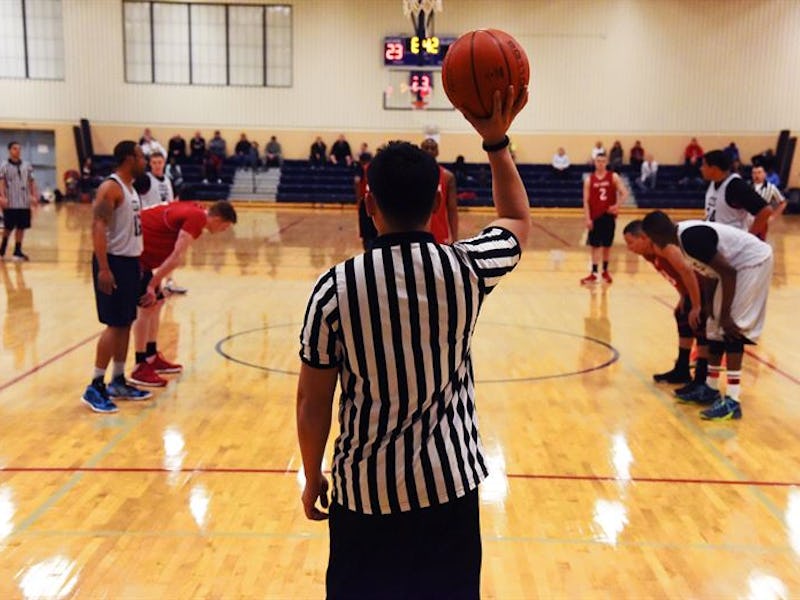Intramural Sports Raised GPA by This Significant Margin in a New Study
Finding community through sports pays off in the classroom.

Intramural sports are a low-commitment way to forget about the more stressful aspects of college, like adjusting to life away from home or studying for exams. But research recently released by scientists at Michigan State University suggests that intramural sports aren’t just a way to relax: Opting to spend a few hours per week on the field or court can have lasting benefits on GPA that make the missed hours of studying well worth it.
In the paper, published February 25 in The Journal of College Student Retention: Research, Theory & Practice, researchers showed that freshmen who participated in low-key, intramural sports fared far better after their freshman year than students who didn’t play sports. They were 40 percent more likely to achieve sophomore status (meaning they took the correct number of credits or didn’t fail classes) and had higher GPAs. Students playing intramural sports reported an average GPA of 3.25 at the end of their first year, whereas students who didn’t play intramurals had GPAs around 3.07.
But these results don’t mean college students should overdo it, say the study’s authors, recent Michigan State graduate Kerri Vasold, Ph.D., and James Pivarnik, Ph.D., a professor of epidemiology and kinesiology.
“Don’t go crazy. Don’t join 20 teams,” Pivarnik said. “Grab some friends, find a moderate number of activities and get involved in something different. The four-to-seven range seems to be effective and is linked to a higher GPA.”
Intramural sports were associated with higher grades in college students at Michigan State.
These findings are based on student records from 1,796 Michigan State undergrads, which the team collected from the registrar office. From there, they divided students into pairs: one who did play intramural sports, and one who didn’t. Each student in the pair had similar demographic characteristics, like economic status, which crystallized the benefits that playing a sport seemed to lend to their academic performance.
Crucially, a paper like this can’t establish causality — so it’s not that playing college sports is a guaranteed GPA boost. Instead, it seems that sports represent a social environment that help students transition to college life. That, in turn, leads to more success academically.
In the paper, the team argues that these results fit well with two psychological models called Astin’s Model of Student Involvement and Tinto’s Theory of Student Departure, which both get at the same idea: The more a student engages in college life, inside and outside of the classroom, the better chance they have of being successful.
Intramural sports are a “contextual model” for social interaction that keeps students engaged because showing up for games and playing on a team requires “continual investment of physical and psychological energy into the sports,” Pivarnik adds. In other words, not only do sports bring someone into the community, they keep someone involved. Overall, that effect was associated with higher GPAs, but it also tended to reduce dropout rates: Students who played intramurals were 2.3 times more likely to return after their freshman year.
At this point, for any freshman worried about handling the college load or participating in college life, playing a low-key sport is one way to start building a new home.
Abstract: The purpose of this study was to investigate differences in academic indicators among intramural sports participants and nonparticipants following their first year of college. Matched samples (N = 1,796; 898 pairs) were generated based on demographic variables. Data were obtained from university databases. Paired sample t tests and logistic regression were used to assess differences between participants and nonparticipants. First-semester and first-year grade point average were significantly higher (p < .001) for participants than nonparticipants. First-semester and first-year credit difference were significantly lower (p < .001) for intramural sports participants than nonparticipants. Participants were more than twice as likely to be retained than nonparticipants and 40% more likely to achieve sophomore status. Results suggest that freshmen students participating in intramural sports during their first year of college achieve greater academic success than nonparticipants.